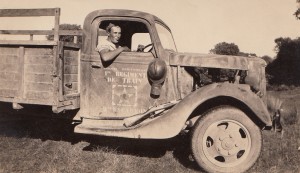Minnesota volunteers in the Spanish Civil War
This is an abstract of Fletcher Warren’s winning essay in the Undergraduate Student category of the 2014 George Watt Memorial Essay Contest. Read the entire paper here.
Snow flurries whipped through the freezing air as 22-year-old Clarence Forrester crunched his way through the snow from the Minneapolis Auditorium, thoughts of a much warmer land an ocean away crowding his mind. An hour earlier, he’d heard students from the University of Madrid plead the cause of the Spanish Republic in its war against a fascist rebellion. Deeply moved by their struggle, Clarence knew he needed to help. So when he heard from a friend that the Communist Party was seeking volunteer soldiers, his answer was simple: “Sure I’ll go.”
As the magnitude of that decision settled in over the next days, Clarence sought company. Sitting with several friends in a warm house, Clarence revealed that he had volunteered to fight in Spain. Howard Stone quickly cut in—he’d like to go too. But before the two could celebrate their newly-shared purpose, the doorbell rang. Veikko Lindfors, a 26-year old Finnish friend of Harold’s stepped in. “Let’s take him too,” Harold said to Clarence. “Take me where?” the bemused Veikko wondered. “To Spain, which is a long way from Minneapolis.”
The decisions of these three Minnesota men-and 57 others–to volunteer for the Abraham Lincoln Brigade grew out of their experiences in depression-era Minnesota. For them, homelessness, joblessness, and hunger were standard fare, and their privations awakened in them a fierce concern for the disadvantaged and a desire to rectify injustice. This paper examines for the first time the backgrounds, political and social context, and motivations of the Minnesota Lincolns.
Fletcher Warren completed this paper as his Senior thesis for B.A. in History at Bethel University, St. Paul, Minnesota with Dr. Christopher Gehrz.













